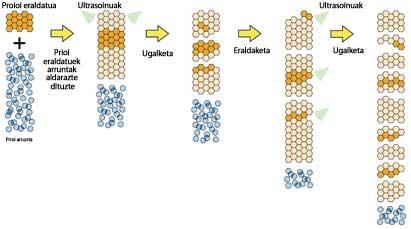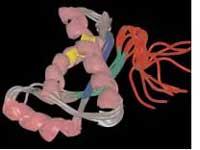New prion detection method
2001/06/14 Galarraga Aiestaran, Ana - Elhuyar Zientzia
Because mad cow disease produces the human variant of Creutzfeldt-Jakob, slaughterhouses analyze 30-month cattle to avoid the risk of contamination. But this test only applies to dead animals and is not valid for younger or newly contaminated animals.
On the contrary, the efficacy of the prion detection method presented by the team led by researcher Claudio Soto is much greater. This allows the search for prions transformed into animals that could not be studied with previous methods, even in live animals. In addition, it can be used in humans as the variant of Creutzfeldt-Jakob can be diagnosed by analyzing blood or spinal cord samples.

The new method uses the same reproductive process as modified prions, but at a rapid speed: the process that would actually take years in nature is passed through the laboratory in a few hours. To do this, researchers took a small sample of the modified brain prions of mice with scrapie. Later, the disease was associated with a large number of prions of mice that had no disease and soon saw modified prions alter normal prions (this is what happens in nature). As a result, groups of prions were produced, to which, through the application of ultrasound, new units were created that continued to modify the normal prions. Thus, they amplified what could happen in nature. This cycle can be performed as many times as desired, obtaining an easily recognizable amount by a few harmful prions.
In addition to being useful for detecting mad cow disease, researchers ensure that modified prions can also be detected in blood. In addition, this work confirms the theory of prions and helps to invent medicines against the disease.
On the other hand, the origin of Alzheimer's, as in spongiform encephalopathies, is in the deformation of proteins. Therefore, according to the Serono Institute, this method can also be used to detect Alzheimer's.

Gai honi buruzko eduki gehiago
Elhuyarrek garatutako teknologia





